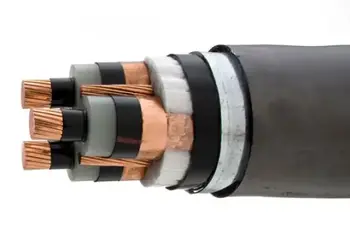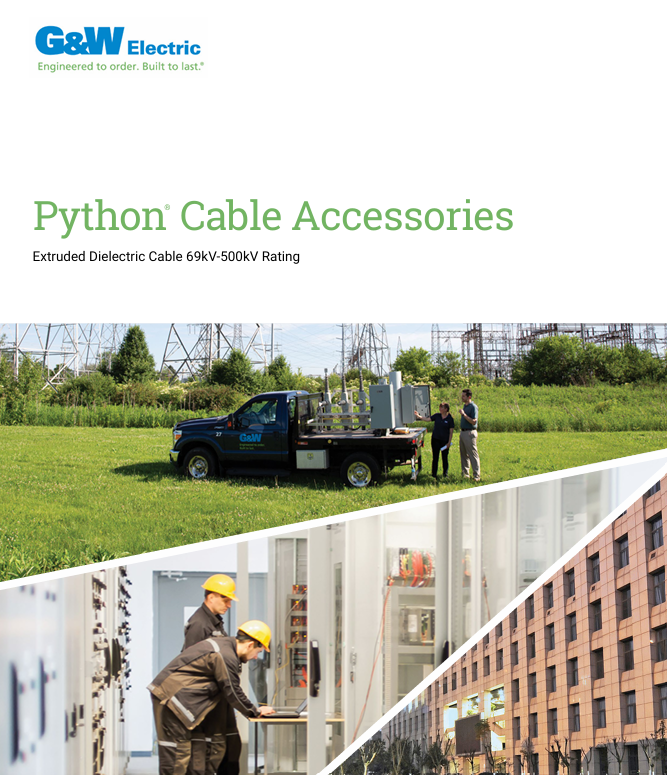Power Cable Diagnostics - Field Applications and Case Studies
By Benjamin T. Lanz, Senior Application Engineer, IMCORP, USA

Download Our OSHA 3875 Fact Sheet – Electrical PPE for Power Industry Workers

- Follow rules for rubber gloves, arc-rated PPE, and inspection procedures
- Learn employer obligations for testing, certification, and training
- Protect workers from arc flash and electrical shock injuries
Power cable diagnostics enables condition monitoring through partial discharge testing, VLF and tan delta analysis, insulation resistance measurements, and online fault location to improve reliability, asset health, and predictive maintenance decisions.
What Is Power Cable Diagnostics?
Testing and analysis of MV/HV cable insulation to detect defects, evaluate condition, and optimize maintenance.
✅ Methods: PD, VLF, tan delta, dielectric spectroscopy
✅ Detects insulation aging, water trees, joint/termination faults
✅ Enables risk-based maintenance and outage reduction
Power cable diagnostics are the most advanced ‘tool’ in the ‘toolbox’ of shielded power cable tests. One of the most common questions regarding cable testing tools is how the test will predict the remaining life of the cable. To be clear, a test that will predict remaining cable life does not exist. However, there are cable tests which can help fulfill testing requirements, dramatically improve reliability, and save the cable owner significant cable replacement costs. For a concise overview of modern practices, consult this power cable testing primer to frame the reliability and cost benefits discussed here.
Although standards have offered guidance, cable owners and test providers are largely on their own to determine the best cable test tool for the application. One of the foremost impediments to the decision making process is the lack of clear, credible information. This short paper attempts to provide objective guidance on how to best use the power cable testing toolbox. The paper then gives recommendations on which test is the most effective for different applications and supports this assertion with case studies. Broader context on measurement methods can be found in comprehensive electrical testing resources that help align procedures with emerging standards.
Test Your Knowledge About Wire and Cable!
Think you know Wire and Cable? Take our quick, interactive quiz and test your knowledge in minutes.
- Instantly see your results and score
- Identify strengths and areas for improvement
- Challenge yourself on real-world electrical topics
THE TOOLBOX(4)
There are 3 major categories of cable tests: high potential withstand, general condition assessment, and partial discharge (PD). Each of these tests serves a different application. By comparing the strengths and weaknesses of each type of test in practical field application, decision makers can quickly determine the test method best suited for their application. In the following section this paper lists the positive and negative attributes for each of the three categories in light of recently published IEEE standards and exclusive large scale field studies and comparison tests. Although these tests are fundamentally different and cannot be readily compared, some clear distinctions can be made on the basis of practical field application. Even installation details like using properly specified cable cleats can affect stress distribution and influence subsequent test readings.
HIGH POTENTIAL WITHSTAND (HIPOT)
The HIPOT withstand test is the simplest tool in the toolbox. The HIPOT withstand test can be divided by voltage source into three categories: Direct Voltage (DC), Very Low Frequency
(VLF), and Power Frequency. There are positive and negative attributes which pertain to all three types of voltage. Technicians often reference dielectric voltage withstand test criteria when setting HIPOT levels and acceptance thresholds. Documented cable handling and testing procedures also promote safe setup and consistent HIPOT execution.
GENERAL CONDITION ASSESSMENT (GCA)
General Condition Assessment is a term which includes a long list of cable diagnostic test methods and technologies, all of which determine the overall health of the cable insulation. These tests are one of the more sophisticated diagnostic tools in the cable testing toolbox. To name a few of these testing techniques,the following list is provided:
- Dissipation Factor/Tangent Delta/Power Factor
- 50/60 Hz
- 0.1Hz (VLF)
- Dielectric Spectroscopy (Time and Frequency Domain)
- Depolarization -Return Voltage (Recovery Voltage)
- Depolarization -Relaxation Current (Isothermal Relaxation Current)
- Leakage Current
- Total Harmonic Distortion
Each of the technologies has its own advantages and disadvantages which are beyond the scope of this paper. There are, however, generalizations which can be made so reasonable comparison to other cable testing techniques can be made. For material-specific insights, see assessment approaches for XLPE and PILC cables that inform how GCA data should be interpreted.
PARTIAL DISCHARGE DIAGNOSTIC TESTS
PD diagnostics are the most effective tool but also the most sophisticated tool in the cable testing toolbox. There are 3 types of PD diagnostics: on-line PD testing, on-line PD monitoring, and off-line PD testing. Continuous on-line PD monitoring technology for cables, although promising, requires further development to make it attractive. For this reason, this paper focuses on on-line and off-line PD testing. PD diagnostics are the only cable tests which can locate defects in shielded powercable. Coordinating cable diagnostics with power transformer health checks supports holistic grid asset management and outage risk reduction.
Found In: Wire and Cable Wiring Methods Handbook, Vol. 3








